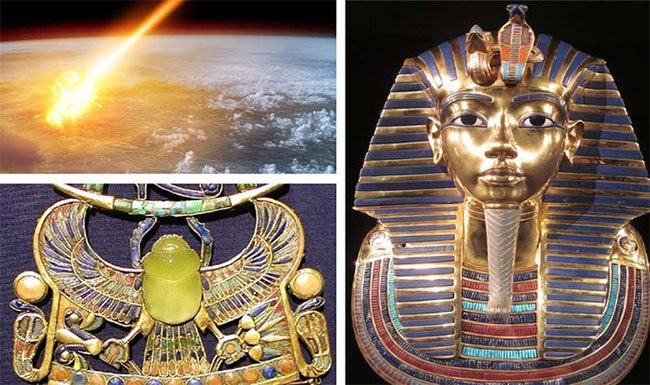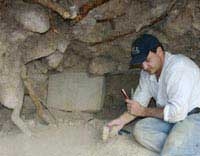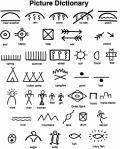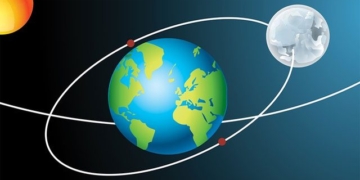A fiery extraterrestrial impact 29 million years ago created a unique material that has been sought after since ancient times: Libyan Glass.
Libyan Glass has appeared in some of the world’s most precious artifacts, including a pendant found in the tomb of Pharaoh Tutankhamun, the famous ruler of Egypt’s 18th Dynasty during the New Kingdom from 1332-1323 BC.

It is a beautiful, naturally pale yellow glass, which has been the center of debates for nearly a century.
Images simulate a meteorite impact, the pendant of Pharaoh Tutankhamun with a scarab made of Libyan Glass, and his portrait on a mask – (Image: EGYPTIAN ANTIQUITIES/NASA).
There are hypotheses that this mysterious material was formed from terrifying lightning strikes, while others suggest it is volcanic glass from the Moon that traveled to Earth.
Additionally, some theories propose that it resulted from sediment deposition or hydrothermal systems, or that a meteorite exploded in the atmosphere.
In an article on The Conversation, Dr. Elizaveta Kovaleva from the University of Western Cape (South Africa) stated that his team – consisting of members from South Africa, Germany, Egypt, and Morocco – examined two pieces of Libyan Glass using advanced electron microscopy techniques, allowing them to observe particles of material with diameters just 1/20,000 the thickness of a sheet of paper.
They identified key minerals within this mysterious material: various types of zirconium oxides (ZrO2). These minerals can have the same chemical composition but different structures, known as polymorphs.
Among them, a polymorph of ZrO2 called cubic zirconia was discovered. This can only form at high temperatures ranging from 2,250°C to 2,700°C. Additionally, another extremely rare polymorph known as ortho-II or OII forms under extreme pressure of 130,000 atm.
These temperature and pressure conditions could only be created by two things: a major meteorite impact or an atomic bomb.
Certainly, during the era of Pharaoh Tutankhamun, humanity did not possess atomic bombs. Therefore, it must have been produced by an extraterrestrial attack.
The study also indicates that the parent crater – the birthplace of this unique glass – must lie somewhere in the Great Sand Sea desert, spanning an area of 72,000 km2 connecting Egypt and Libya.
Two famous impact craters in the area are GP and Oasis, with diameters of 2 km and 18 km, respectively, which have been ruled out due to being too far and too small compared to the nature of the material and the main locations where it is found.
This is the next task for the team: To trace the parent crater. It must be enormous given the impact parameters, as well as how it created the extremely abundant Libyan Glass, which can still occasionally be found today.
However, it is highly likely that this crater has been heavily eroded, covered by sand. Further studies will require a combination of remote sensing and geophysical surveys.





















































